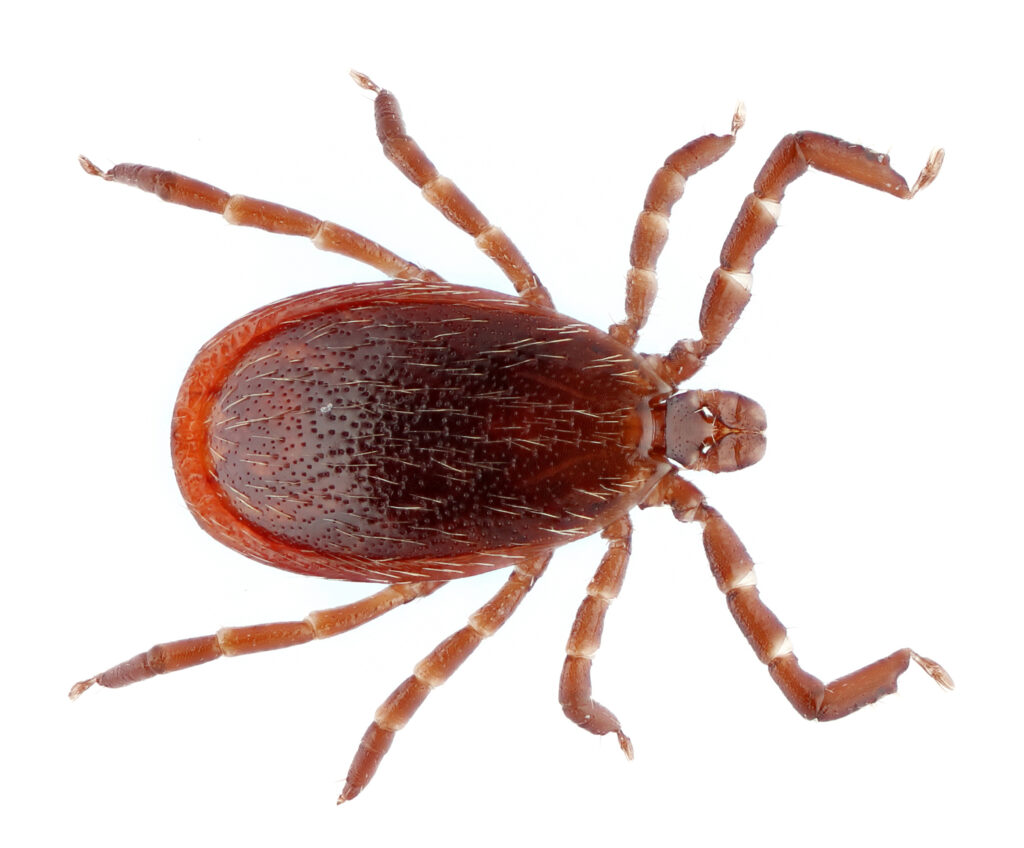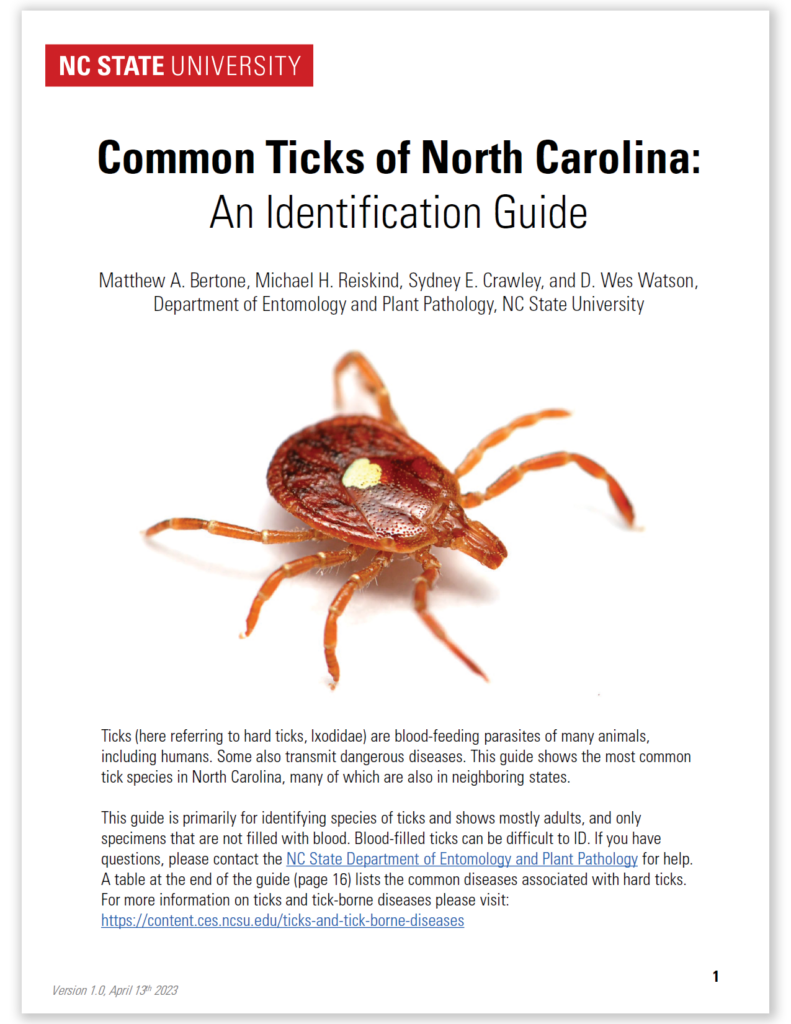What’s That Tick? New Identification Guide to Species in North Carolina Can Help
go.ncsu.edu/readext?930064
en Español / em Português
El inglés es el idioma de control de esta página. En la medida en que haya algún conflicto entre la traducción al inglés y la traducción, el inglés prevalece.
Al hacer clic en el enlace de traducción se activa un servicio de traducción gratuito para convertir la página al español. Al igual que con cualquier traducción por Internet, la conversión no es sensible al contexto y puede que no traduzca el texto en su significado original. NC State Extension no garantiza la exactitud del texto traducido. Por favor, tenga en cuenta que algunas aplicaciones y/o servicios pueden no funcionar como se espera cuando se traducen.
Português
Inglês é o idioma de controle desta página. Na medida que haja algum conflito entre o texto original em Inglês e a tradução, o Inglês prevalece.
Ao clicar no link de tradução, um serviço gratuito de tradução será ativado para converter a página para o Português. Como em qualquer tradução pela internet, a conversão não é sensivel ao contexto e pode não ocorrer a tradução para o significado orginal. O serviço de Extensão da Carolina do Norte (NC State Extension) não garante a exatidão do texto traduzido. Por favor, observe que algumas funções ou serviços podem não funcionar como esperado após a tradução.
English
English is the controlling language of this page. To the extent there is any conflict between the English text and the translation, English controls.
Clicking on the translation link activates a free translation service to convert the page to Spanish. As with any Internet translation, the conversion is not context-sensitive and may not translate the text to its original meaning. NC State Extension does not guarantee the accuracy of the translated text. Please note that some applications and/or services may not function as expected when translated.
Collapse ▲
A male deer or blacklegged tick (Ixodes scapularis)
As outdoor season begins to ramp up, one unfortunate side effect is more encounters with ticks. These blood-sucking arthropods seek out humans and other animals on which to feed. Several species are found in North Carolina, and some can transmit serious diseases to their victims.
Because different species have different life histories and diseases they can transmit, identifying ticks can be important. Our new guide is focused on identification of the most common species humans encounter in the state, most of which are common in neighboring states as well. It provides descriptions of their anatomy, a key to common species, and pages dedicated to these species — all illustrated using high resolution color images. The guide also includes a table showing the various diseases that ticks can potentially carry and transmit.

We hope this guide will be usable by many audiences. Please let us know how the guide works for you — we welcome comments on how to make it easier to understand.
For more information on tick diseases, prevention, removal, and control please see our fact sheet on the subject.


